Marissa Johnston: It’s essential whisky brands invest in female bartenders
Former head of Diageo World Class & Advocacy, Marissa Johnston, has seen first-hand how women behind the bar have been underserved by whisky brands. Our executive director explains why and how the industry should support female bartenders to help whisky as a whole thrive.
Over the past decade, I’ve managed more global cocktail competitions than I can count and in my experience over those 10 years a concerning trend constantly revealed itself – women remain significantly underrepresented.
The challenges facing women in our industry go beyond the more commonly cited issues like lack of confidence and inadequate support; at a deeper level, there is a pressing need for increased representation and advancement opportunities explicitly tailored for women.
We work in an industry where, according to the National Restaurant Association, more than 80% of consumers learn about new brands at bars and restaurants, trusting staff recommendations and, as a result, recruiting a broader consumer base for products like whisky. It would seem good for business then that working with, investing in and educating women behind the bar is not just a wise decision for whisky brands, it’s essential if they want to thrive.
From trade show programmes to whisky judging panels, branded guest shifts and competitions, there are plenty of ways in which women behind the bar can work more actively alongside whisky.
“working with, investing in, and educating women behind the bar is not just a wise decision for whisky brands, it’s essential if they want to thrive.”
Regrettably, many industry events overwhelmingly favour male representation, perpetuating the so-called ‘boys club’ culture. I recall a recent disheartening moment when I viewed a series of trade masterclasses for an upcoming cocktail festival in Australia, only to discover that there wasn’t a single woman bartender featured.
Such glaring oversights are simply unacceptable in today’s progressive landscape, and it’s high time brands prioritise diversity when planning and participating in these events, as they otherwise perpetuate the notion that the bar is only a place where men can thrive.
While challenges abound, there are also shining examples of initiatives that genuinely empower women behind the bar. For instance, Campari Academy has partnered with Women in Hospitality to offer a scholarship at the acclaimed Sydney cocktail bar Maybe Sammy, along with an educational trip to Paradiso in Barcelona. This scholarship specifically supports aspiring women in hospitality who possess at least a year of industry experience.
Additionally, Double Dutch has established a transformative Female Bartending Scholarship Programme designed to nurture and support emerging female talent in the hospitality sector. This initiative provides aspiring bartenders and mixologists invaluable one-on-one mentoring over an eight-week period. Participants receive guidance on various essential topics, from cocktail chemistry to personal growth, alongside experiential learning opportunities like distillery visits.
The Women in Hospitality programme offers scholarships and educational opportunities for women working behind the bar.
These programmes exemplify how proactive measures can help women gain the confidence and skills necessary to succeed in a traditionally male-dominated field.
As whisky brands consider deepening their investment in initiatives that elevate women in the industry, I encourage them to focus on several key strategies. First, when participating in trade shows, hosting events or sponsoring guest shifts, brands should advocate for more diverse representation and equal pay.
An example of this was when I selected Minakshi Singh, co-founder and CEO of Thirsty Three Hospitality in India, to be a judge at the World Class Global Finals in 2024 Sao Paulo. India only legalised women to bartend as late as 2010 and Singh has been a trailblazer in the local industry.
She became not just the first woman from India to judge at World Class, but the first person from the Indian subcontinent to hold the honour. By giving her a platform on the global stage, it helped to inspire the next generation of bartenders.
“it's high time brands prioritise diversity, as they otherwise perpetuate the notion that the bar is only a place where men can thrive.”
Second, brands can evaluate the diversity within their sales teams and brand ambassadors. A more inclusive representation resonates deeply with customers and creates a stronger emotional connection to the brand. Consumers are increasingly drawn to brands that reflect their values, and authenticity comes through diversity.
Third, brands should develop programmes designed to empower women in the whisky industry while ensuring they receive recognition for their unique contributions. Tailored mentorship schemes can help cultivate the talent that female bartenders bring, paving the way for a more equitable environment.
Lastly, rethinking the structure of events and training sessions to make them more welcoming can have a significant impact. Incorporating family-friendly policies, such as allowing children to attend, opens doors for working mothers and cultivates a brand image that is more relatable and accessible, appealing to a wider audience.
By championing women behind the bar, I firmly believe whisky brands can ultimately enhance our community, engage more customers and elevate the overall quality of our industry. A thriving whisky culture is one that values contributions from all its members - both old and new.
It is time for whisky brands to step up, recognise the strengths of women behind the bar and actively invest in their future.





